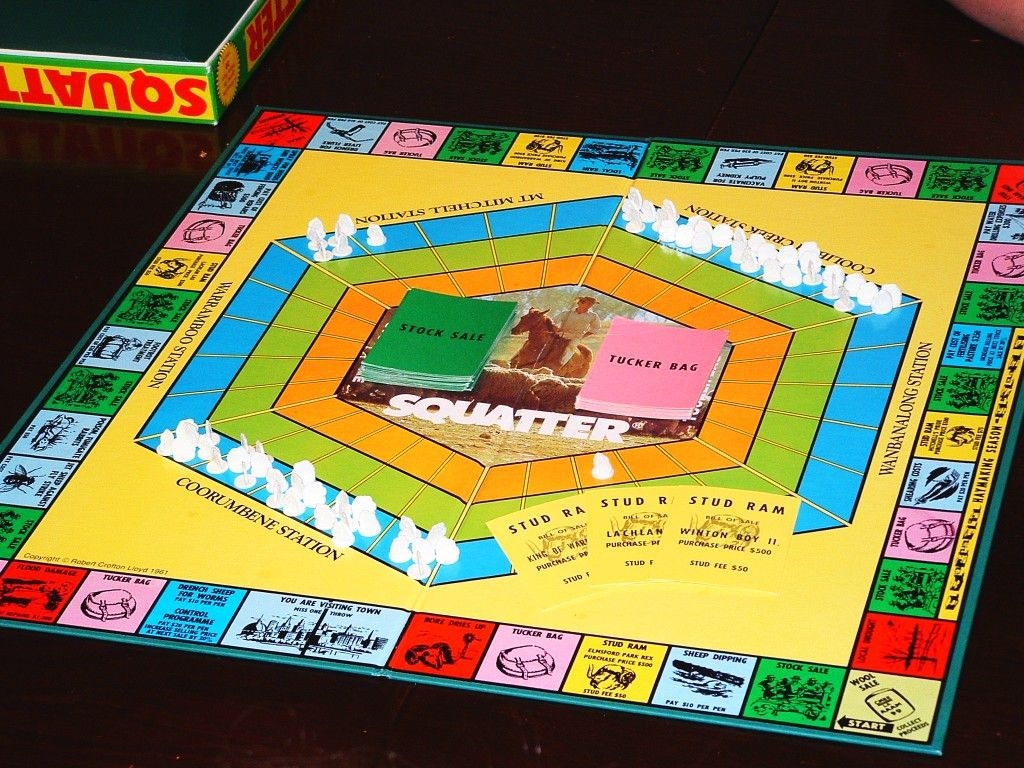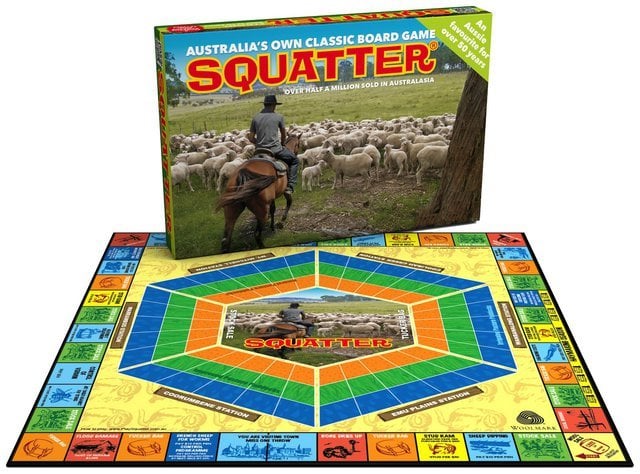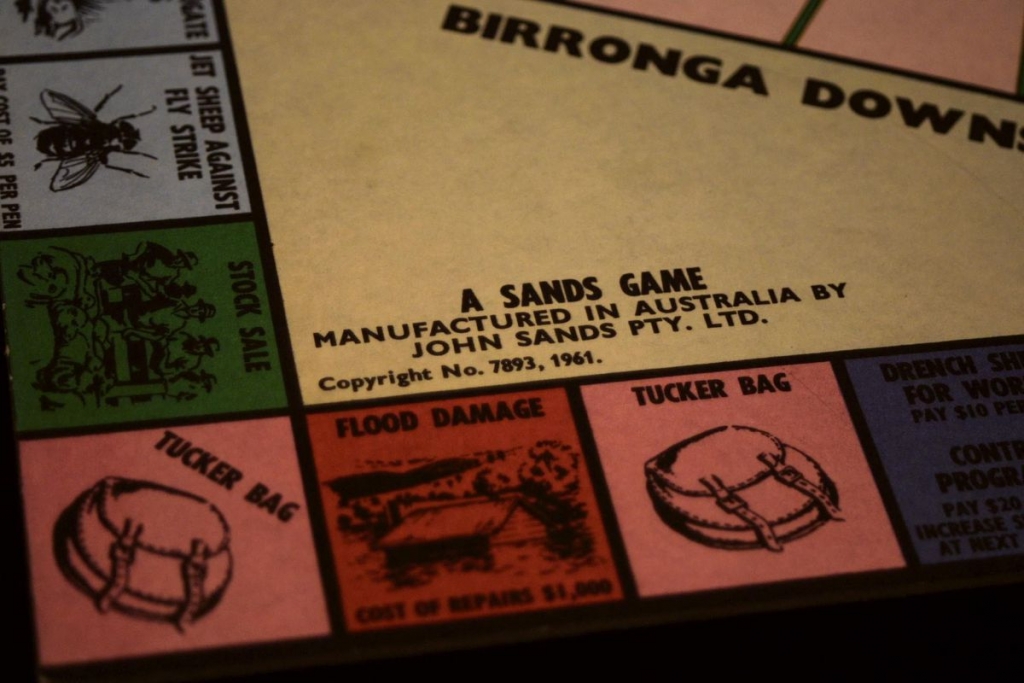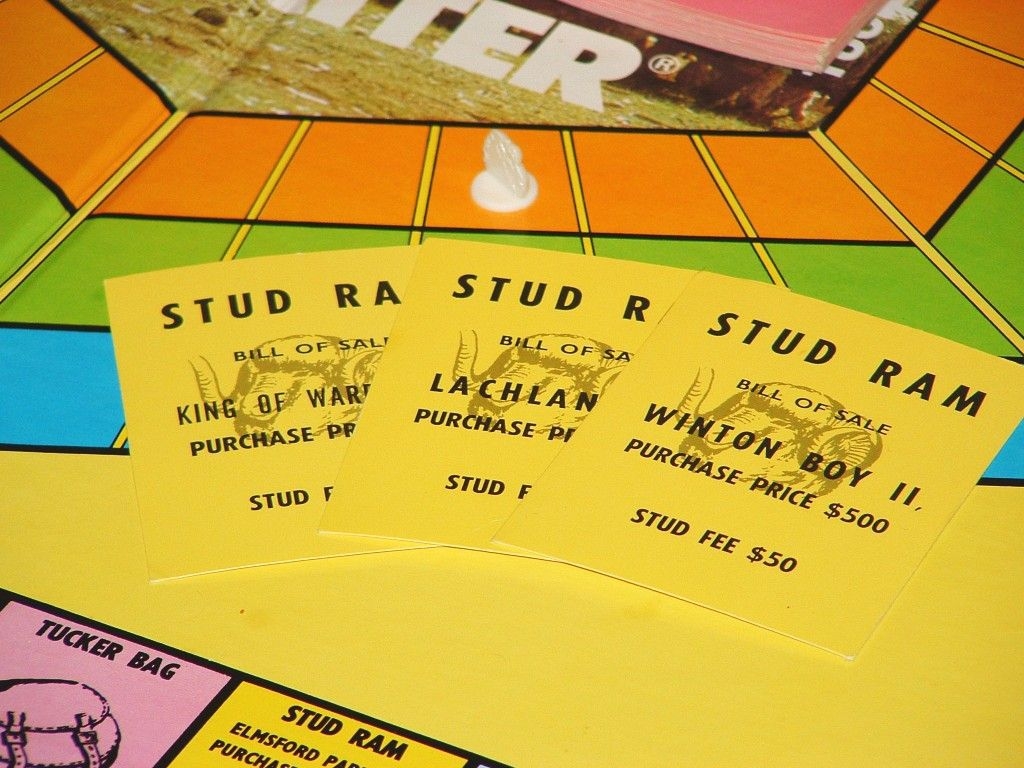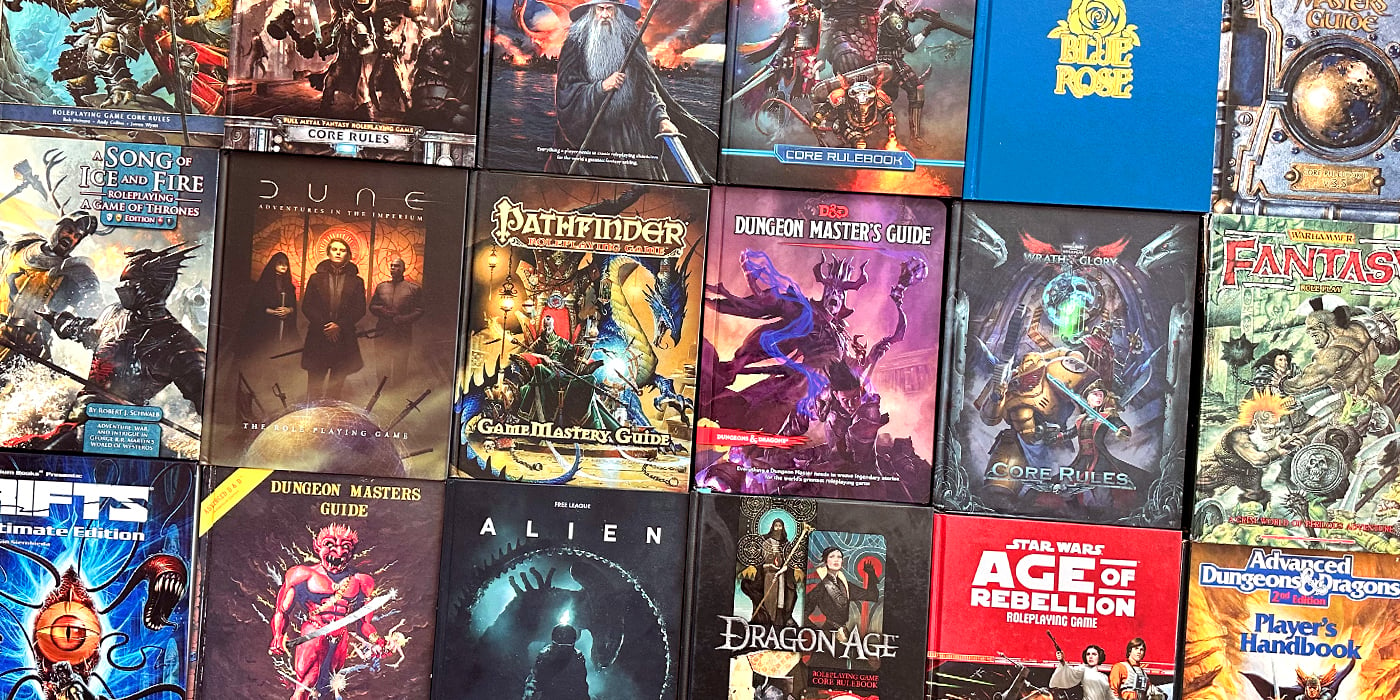RETRO: G’Day, Mate! Have A Bonzer Time Playing ‘Squatter’. Sweet as!
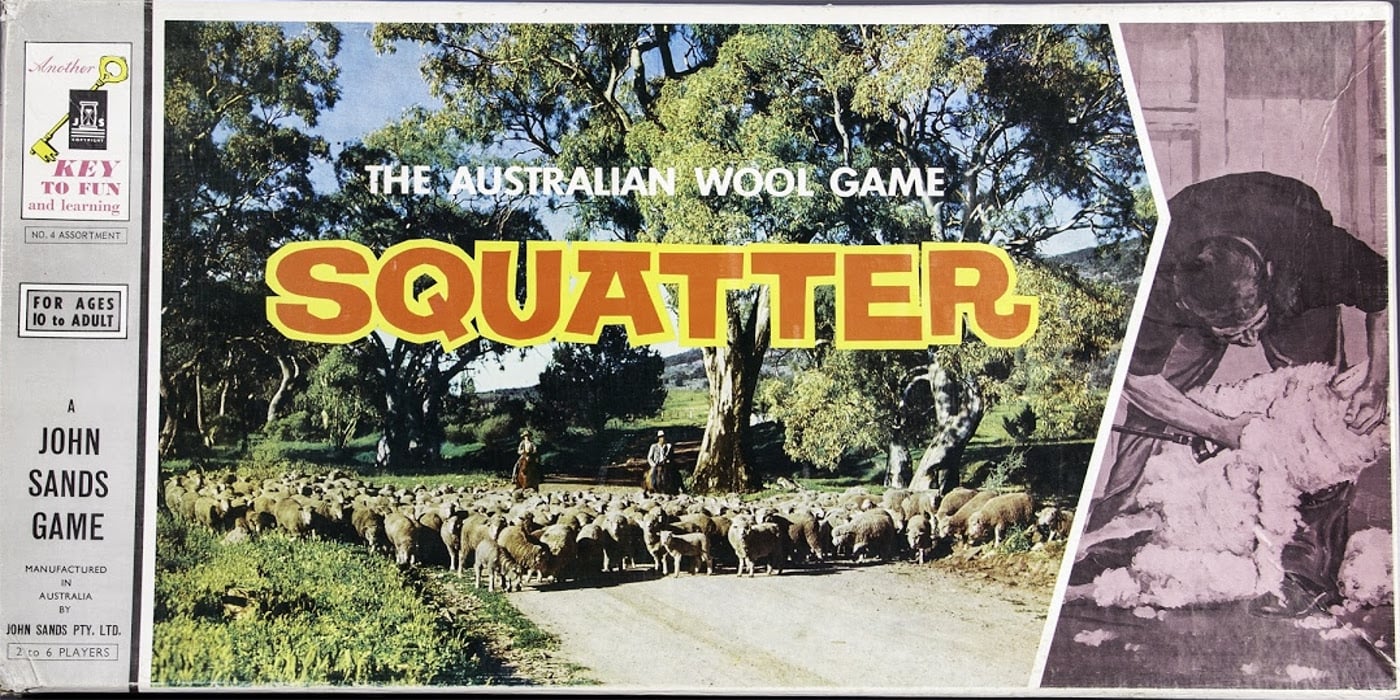

Tall poppies really go off playing Aussie’s A1 fair dinkum board game. Don’t go the whole pie with your mob or you’ll be a guffed bogun.
I would apologize to our Australian readers for butchering their lingo, but I’m not sure that I really did it any injustice. Instead, let’s take a look at today’s features game, Squatter, which is like Monopoly but with sheep instead of hotels.
A Little History
Squatter made its debut at the Royal Melbourne Show, an agricultural show held at Melbourne Showgrounds every September since 1848. The game has since sold over 500,000 copies, making it the most successful Australian published board game ever.
Squatter still has a great following and is, as best as I understand, still a staple in many Aussie homes. In fact, it has a website devoted to teaching the game and promoting the fan club.
The game has been added as an item of cultural significance to the collections of the Australian Stockman’s Hall of Fame, Outback Centre, the National Wool Museum and the National Museum of Australia. On top of that, it’s been reprinted at least 6 times, most recently in 2016. So what makes this game great enough to retain such a following to this day? Let’s find out!
Gameplay
Squatter is a competitive economic game with resource management mechanics. The goal of each player is to be the first player to have 6,000 sheep in fully irrigated pastures. Sheep and pasture improvements are purchased throughout the game while selling wool is the player’s main source of income.
Each player begins with 3,000 sheep, which are noted by sheep tokens.
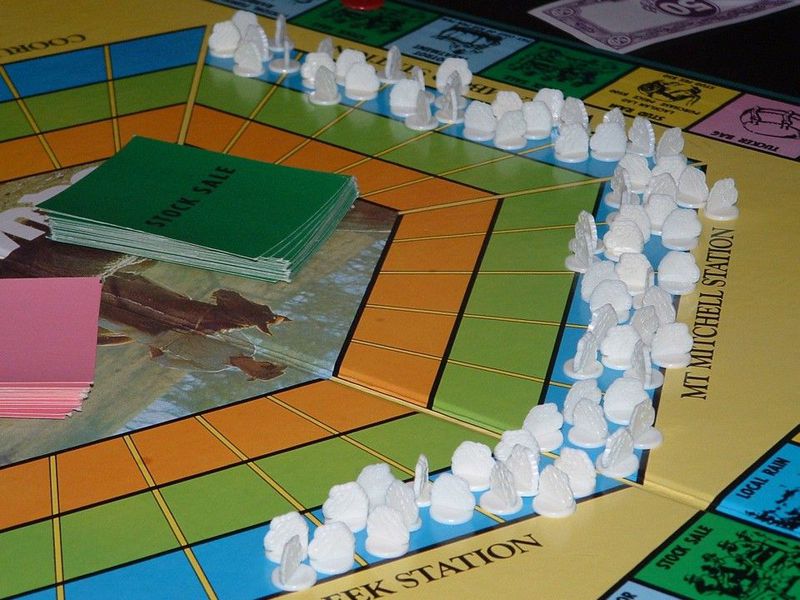 Might need a few more tokens there, mate.
Might need a few more tokens there, mate.
Each sheep token represents 200 sheep, so players only need 15 tokens to start. Each player has a Sheep Station of their own, on each wedge of the board. Their sheep begin on the orange Natural Pastures. The goal of the game is to be the first player to get 6,000 sheep in fully irrigated pastures, as noted by the blue spaces in each Station.
The actual gameplay takes place on the outer ring of the board, where players move about in Monopoly like fashion; landing on spaces and performing the noted action.
While most spaces affect the player’s money total or sheep count in some way, there are some more important spaces. Stud Rams are important for getting additional money during each Wool Sale.
Each time a player passes the Wool Sale space, they get to perform a wool sale to get money (like Monopoly ‘Go’, but variable). The amount of money they gain is dependent on how many pens of sheep they have and how many stud rams. Handy dandy charts help players along to determine how much they gain.
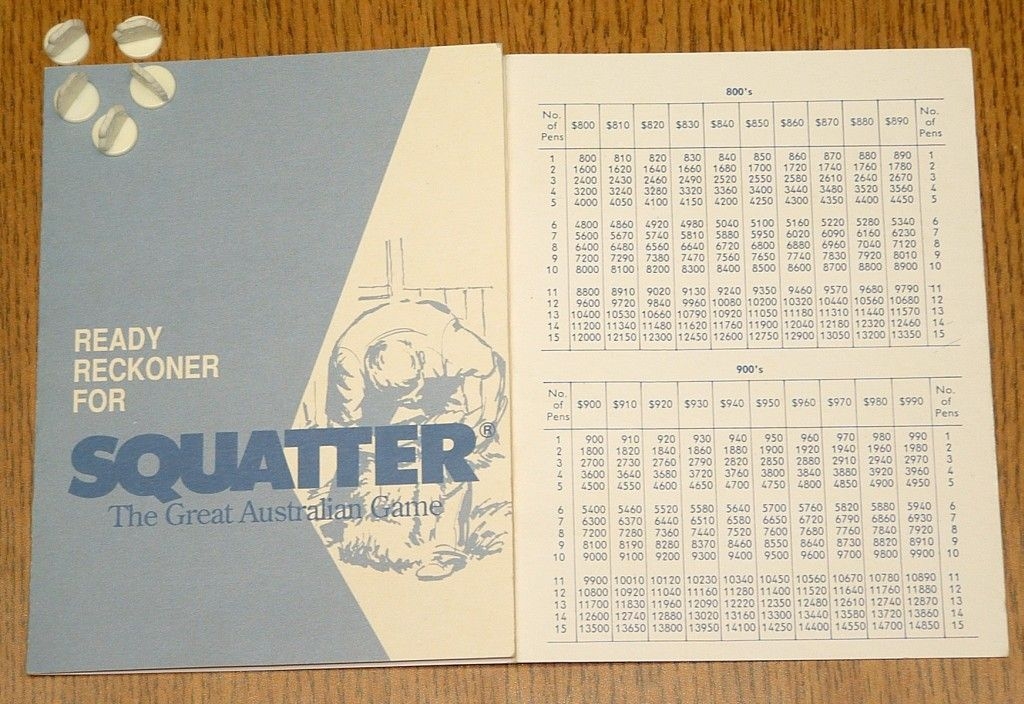 Although this chart is for selling stock, other charts exist for other purchases and sales.
Although this chart is for selling stock, other charts exist for other purchases and sales.
As players gain money they will be able to buy more sheep and improve their pastures. However, dealing with drought and studs having an aneurysm and dying for no reason will slow that process down. Tucker Bag spaces work like Chance and will throw in even more randomness with boons and dooms. The first player to do that thing I said before wins the game!
Final Thoughts
Is Squatter really all that different from Monopoly? Yes and no. At the fundamental level, mechanically it’s the same really. Roll, move, buy, sell, steamroll, win.
But there are a lot more options in terms of spaces to land on and choices for the players to make. With multiple things to balance at once (money, sheep and pastures) versus just money, Squatter provides more strategy than that of Monopoly. Not that much, mind you, but more.
Overall, I’m sure this game would hold a higher place in my heart if I had grown up down unda’, but it’s still a pretty solid family game that I’d recommend for the ovine enthusiast in your life.
Thanks for reading!

